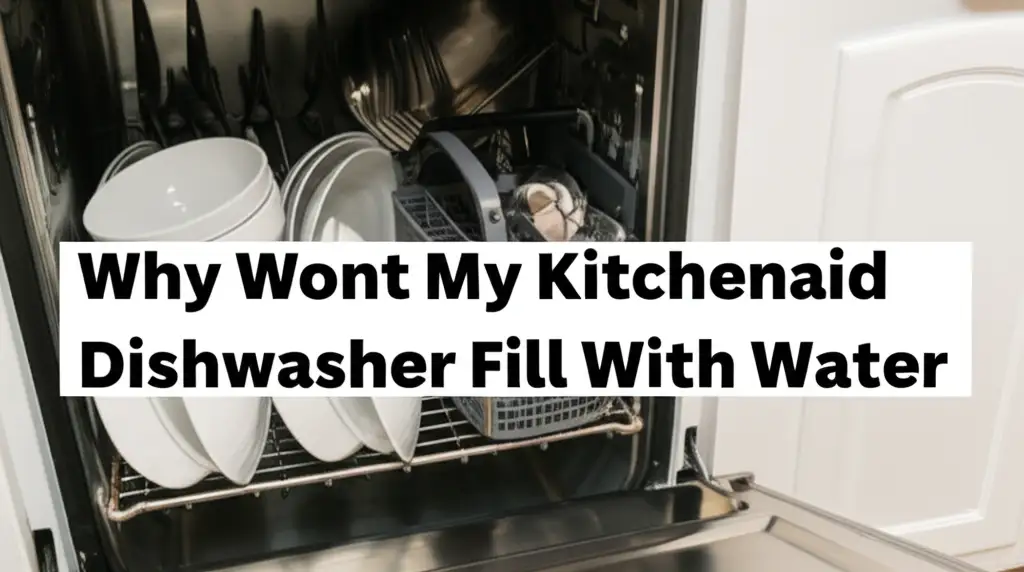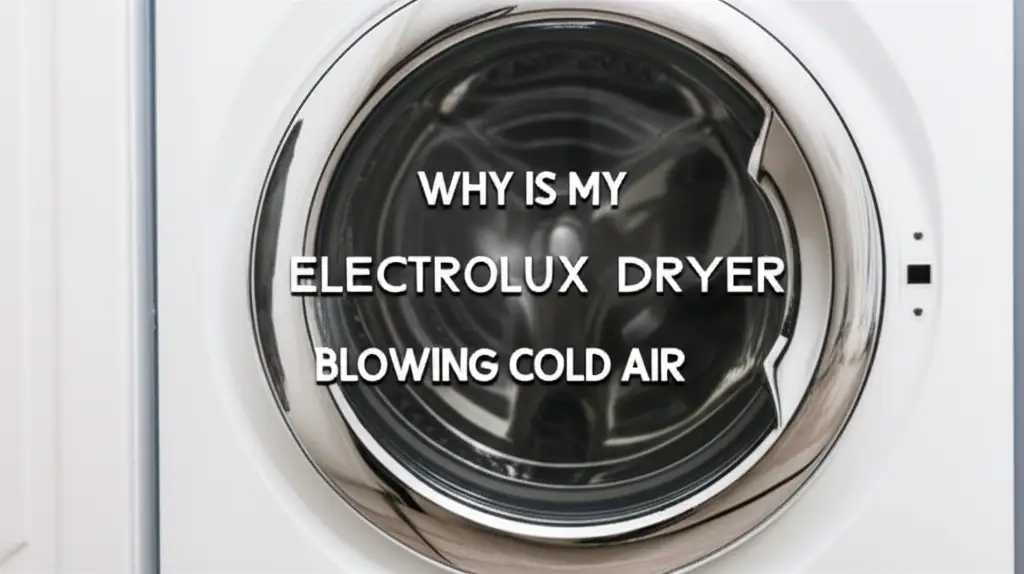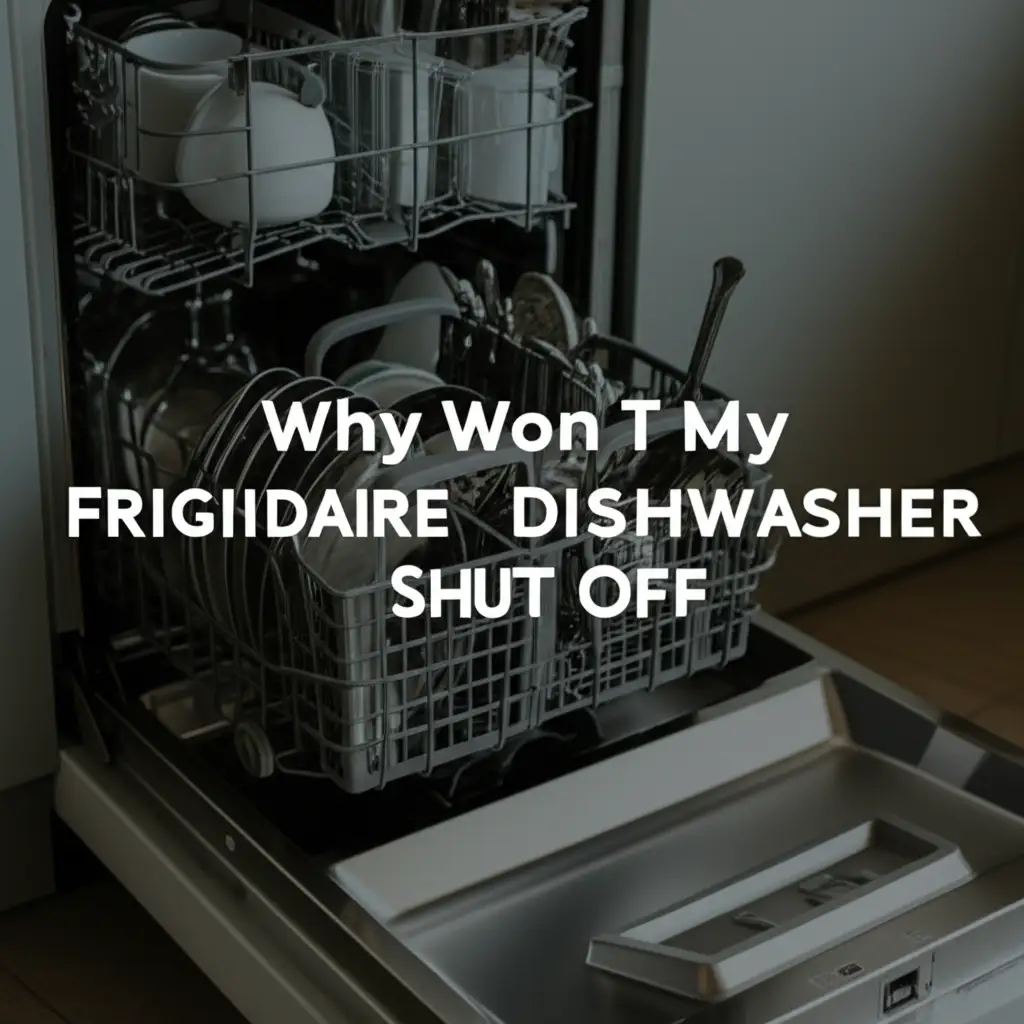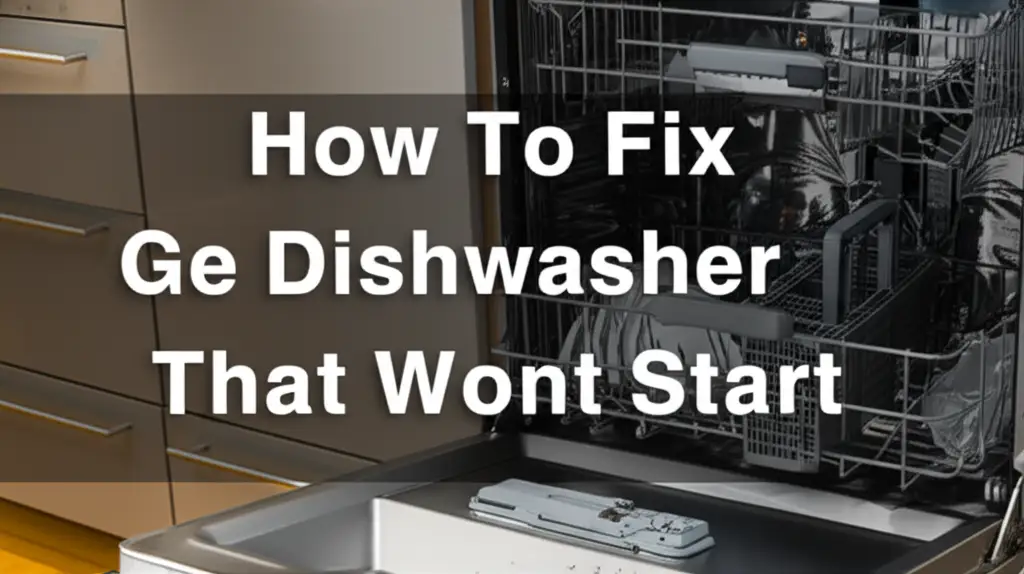· Todd Martin · Appliance Repair · 12 min read
How To Fix Bosch Dishwasher E31 Error Code
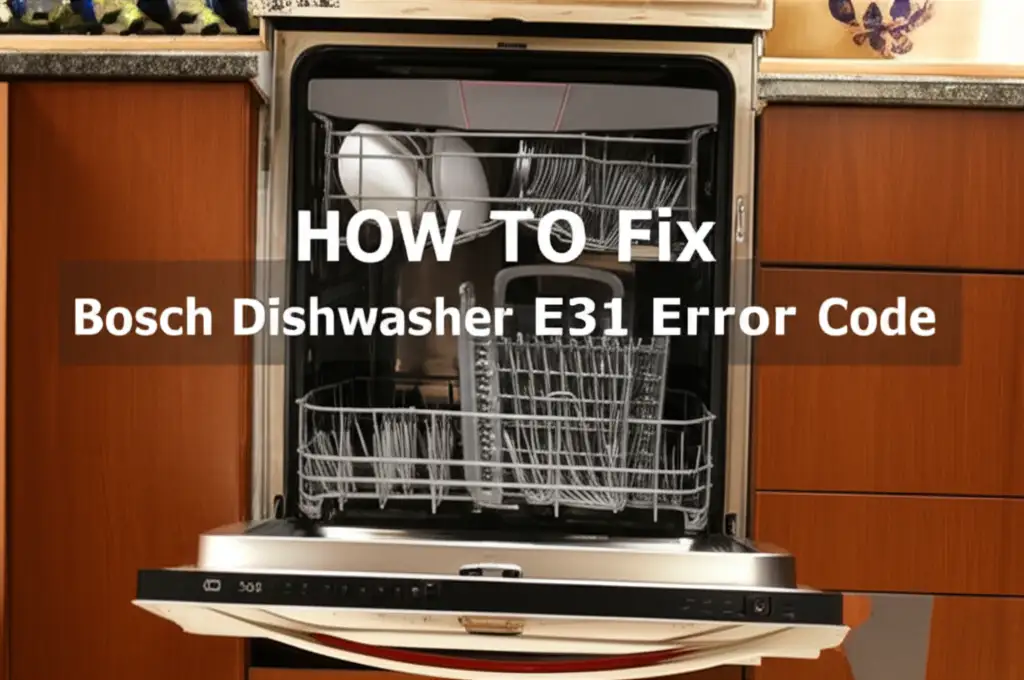
Fixing Bosch Dishwasher E31 Error: A Simple Guide
Seeing an error code on your Bosch dishwasher can stop your day. The E31 error code is one such message. It signals trouble with your appliance. This specific code often points to issues with water intake or the heating system.
But do not worry. Many E31 problems are fixable without a professional. This guide will walk you through the steps. We will cover how to diagnose the issue. Then, we will show you how to perform simple repairs. You will learn about common causes and effective solutions. My goal is to help you get your Bosch dishwasher running smoothly again.
Takeaway
To fix the Bosch dishwasher E31 error, you need to check specific parts.
- Perform a hard reset to clear temporary glitches.
- Check water supply for proper pressure and connections.
- Inspect the flow sensor for debris or malfunction.
- Test the heating element for continuity and damage.
- Examine the main control board for visible issues.
The Bosch dishwasher E31 error code typically means there is a problem with the water supply or the heating element. This issue prevents the dishwasher from filling correctly or heating the water to the right temperature. Fixing it often involves checking water inlet, flow sensor, or the heating component.
Understanding the Bosch Dishwasher E31 Error
When your Bosch dishwasher displays the E31 error, it signals a problem. This code often means the machine struggles with water. Specifically, it might relate to water intake, water flow, or the heating system. The dishwasher cannot complete its cycle without enough hot water.
I know how frustrating it feels to see an error. But knowing what the code means is the first step. This error prevents your dishes from getting clean. It also stops your appliance from working as it should.
Initial Steps to Troubleshoot E31
Before you dive into complex checks, start with simple steps. First, perform a hard reset. Turn off the dishwasher at the power outlet. Unplug it from the wall. Wait about five minutes. Then, plug it back in and turn it on. This reset can clear temporary errors. Sometimes, a simple power cycle fixes many problems.
Next, check your circuit breaker. Make sure it has not tripped. A tripped breaker cuts power to the dishwasher. This can cause various error codes. Reset the breaker if it is off. These initial steps are quick and often effective.
Common Causes of E31
The E31 error often comes from a few common sources. A blocked water inlet can be one cause. This stops water from entering the dishwasher. Another common issue is a faulty flow sensor. This sensor tells the dishwasher how much water is inside. If it fails, the machine gets wrong readings.
Problems with the heating element also trigger E31. The heating element warms the water for washing and drying. If it breaks, the water stays cold. Finally, a damaged main control board can cause E31. The board controls all dishwasher functions. A bad board sends incorrect signals.
Checking Your Water Supply and Inlet
The E31 error often points to water supply problems. Your dishwasher needs a steady flow of water to work. First, check your kitchen faucet. See if water comes out with good pressure. If the sink faucet has low pressure, your home’s water supply might be the issue. This could affect the dishwasher too.
Ensure the water shut-off valve for the dishwasher is fully open. This valve is usually under the sink or behind the dishwasher. If it is partly closed, water flow decreases. This leads to the E31 error. A good water supply is crucial for your dishwasher’s operation.
Inspecting the Water Inlet Valve
The water inlet valve controls water entry into the dishwasher. This valve can get clogged or fail. First, turn off the water supply to the dishwasher. Then, disconnect the water supply hose from the valve. Look for any debris in the screen of the valve. Clean it if you see any particles.
You can also test the valve using a multimeter. It should show continuity. If it does not, the valve is likely bad. A faulty inlet valve cannot open to let water in. Replacing a bad valve is a common fix for water-related errors. This component is key for proper water filling.
Clearing Water Filters
Dishwashers have filters to catch food particles. These filters are usually at the bottom of the tub. Over time, these filters can become very dirty. A clogged filter can restrict water flow inside the dishwasher. This affects the machine’s ability to fill or drain correctly.
Remove the filters and clean them thoroughly. Most Bosch dishwashers have a multi-part filter system. This includes a coarse filter and a fine micro-filter. Rinse them under running water. Use a soft brush to remove stuck-on food. Make sure no residue remains. Reinstall the filters correctly. A clean filter system helps ensure good water circulation. For more details on water issues, you can check out this guide on why your Bosch dishwasher has water in the bottom.
Inspecting the Flow Sensor
The flow sensor is a critical part in your Bosch dishwasher. It measures the amount of water entering the machine. If this sensor gives a wrong reading, the dishwasher can display E31. This is because the appliance thinks there is either too much or not enough water. A faulty or dirty flow sensor often triggers this error code.
The sensor helps the dishwasher determine the correct water level for each cycle. If it malfunctions, the dishwasher’s internal logic gets confused. This leads to cycle interruptions. It can also cause the dishwasher to stop working entirely. Checking this sensor is important for fixing E31.
Locating the Flow Sensor
The flow sensor is usually found near the water inlet valve. It is inside the dishwasher’s base. You might need to pull the dishwasher out of its cabinet. Remove the lower access panel. Look for a small plastic part with wires attached. It is often integrated into the water inlet system or the sump area.
Consult your dishwasher’s service manual if you have trouble finding it. The manual provides diagrams. Knowing its exact location saves time. Proper identification ensures you test the right component. This step is crucial before attempting any repairs.
Cleaning the Flow Sensor
Sometimes, the flow sensor is not faulty, just dirty. Mineral deposits or debris can build up on it. This buildup can block the sensor’s readings. To clean it, first disconnect the sensor. Use a soft brush and warm, soapy water. Gently scrub off any visible residue.
Rinse the sensor well with clean water. Make sure no soap remains. Allow it to dry completely before reattaching it. Reinstall the sensor carefully. A clean sensor can accurately measure water flow. This might resolve your E31 error without needing a replacement part.
Assessing the Heating Element
The E31 error code can also point to a problem with your dishwasher’s heating element. This component is vital. It warms the water during the wash cycle. It also helps dry the dishes at the end. If the heating element fails, the dishwasher cannot heat the water. This leads to dishes that are not clean or dry.
Cold water can also damage sensitive items over time. The dishwasher’s computer detects this lack of heat. It then triggers the E31 error. Checking the heating element is a key step in troubleshooting. Its proper function is essential for effective dishwashing.
Testing Heating Element Continuity
You can test the heating element with a multimeter. First, turn off power to the dishwasher. Disconnect the wires leading to the element. Set your multimeter to measure ohms (resistance). Place the probes on the two terminals of the heating element. A working element should show continuity. This means a low resistance reading, typically between 10 and 30 ohms.
If the multimeter reads “OL” (open circuit) or shows no continuity, the heating element is broken. It needs replacement. This test tells you if the element can conduct electricity. A failed element cannot heat the water.
Recognizing Heating Element Failure Signs
Besides the E31 error, other signs point to a bad heating element. Your dishes might come out cold after a wash cycle. They might also remain wet even after the drying cycle completes. You might notice soap residue left on the dishes. This happens because cold water does not dissolve detergent effectively.
Sometimes, you might see rust spots on the heating element itself. This is a clear sign of corrosion and damage. If you notice any of these signs along with the E31 code, the heating element is likely the culprit. Replacing it should resolve the issue. If you are experiencing other error codes with your Bosch appliance, you might find solutions for Bosch dishwasher E25 error or even Samsung dishwasher error code 4C if you have other appliances.
Examining the Main Control Board
If you have checked the water supply, flow sensor, and heating element, look at the main control board. This board is the “brain” of your Bosch dishwasher. It sends signals to all other components. If the main control board malfunctions, it can trigger various error codes, including E31. A damaged board might send incorrect commands. It might also fail to recognize correct sensor readings.
Problems with the control board are less common but serious. They often require professional attention. However, there are a few things you can check yourself. Sometimes, a simple visual inspection reveals the problem. Other times, a reset might temporarily help.
Visual Inspection for Damage
Carefully remove the control panel to access the main control board. Look for any visible signs of damage. This includes burn marks or swollen capacitors. A burnt smell can also indicate a problem. Check for loose connections or frayed wires. These issues can disrupt the board’s function.
Even small signs of damage can indicate a failing board. If you see any physical damage, the board needs replacement. Take pictures before disconnecting anything. This helps you reconnect wires correctly.
Resetting the Control Board
Sometimes, the main control board just needs a reset. This can clear temporary glitches. You already performed a hard reset by unplugging the dishwasher. For some Bosch models, a specific button combination might exist. This combination initiates a deeper reset. Check your dishwasher’s user manual for specific instructions.
If a soft reset does not work, a professional might be able to reprogram the board. However, severe damage usually means replacing the entire board. Replacing a control board can be costly. It is often a last resort after checking all other possibilities.
Professional Help and Preventative Tips
After trying all troubleshooting steps, you might still see the E31 error. At this point, it is wise to consider professional help. Some issues are simply too complex for a DIY fix. Dishwasher repair can involve specialized tools. It also requires specific knowledge. A certified technician can diagnose the problem accurately. They can also perform repairs safely.
Do not risk further damage to your appliance. Trying to fix something beyond your skill level can make the problem worse. It can also be dangerous. Professionals have experience with Bosch appliances. They can quickly pinpoint the exact cause of the E31 error.
When to Call a Technician
Call a technician if:
- You have tried all the steps listed here.
- You are not comfortable working with electrical components or water lines.
- The problem involves the main control board, which is often expensive to replace.
- You cannot find the faulty part or perform the repair.
A professional repair ensures the job is done right. It also comes with a warranty on parts and labor. This gives you peace of mind. Investing in professional help saves you time and potential headaches. For similar appliance issues, you might find our guide on fixing a Samsung dishwasher with an LC code helpful, even though it’s a different brand, it outlines common repair strategies.
Simple Maintenance for Your Dishwasher
Regular maintenance helps prevent future error codes. Clean your dishwasher’s filters regularly. This prevents food particles from clogging the system. Run a dishwasher cleaner cycle every few months. This removes hard water buildup and grease. Use a descaling agent if you live in an area with hard water.
Check hoses for kinks or cracks. Ensure the spray arms are clear of debris. Wipe down the door gasket to prevent mold growth. These simple steps extend your dishwasher’s life. They also prevent issues like the E31 error from returning. Good maintenance keeps your Bosch dishwasher running efficiently for years.
FAQ Section
What does E31 mean on a Bosch dishwasher? The E31 error code on a Bosch dishwasher typically indicates a problem with the water intake or heating system. This means the dishwasher is not getting enough water, or the water is not heating to the correct temperature. It often points to issues with the flow sensor or heating element.
Can I fix E31 myself? Yes, many E31 error causes are fixable by the user. You can try steps like resetting the dishwasher, checking water supply, cleaning filters, and inspecting the flow sensor or heating element. Simple tools and basic DIY knowledge are often enough to resolve the issue.
How do I reset my Bosch dishwasher? To reset your Bosch dishwasher, first, unplug it from the power outlet. Wait for about 5 to 10 minutes. Then, plug it back in. This hard reset can clear temporary glitches and error codes like E31. Some models may have specific button combinations for a deeper reset; check your manual.
What causes a Bosch dishwasher to not heat water? A Bosch dishwasher not heating water is most often caused by a faulty heating element. Other reasons include a malfunctioning thermostat, a bad control board, or low water pressure preventing proper fill. The E31 error often appears when the heating element fails to perform its function.
How long does a Bosch dishwasher last? A Bosch dishwasher typically lasts between 10 to 15 years. This lifespan depends on factors like usage frequency, maintenance, and water quality. Regular cleaning and prompt attention to minor issues can help extend its operational life.
Conclusion
Facing the Bosch dishwasher E31 error can be an annoyance. However, most causes are straightforward to diagnose and fix. We have walked through checking your water supply, inspecting the flow sensor, and testing the heating element. You now have the knowledge to tackle these common problems. Remember to always prioritize safety by unplugging the appliance before any checks.
By following these steps, you can often restore your Bosch dishwasher to full working order. If you encounter issues beyond your comfort, do not hesitate to call a professional technician. Regular maintenance will also help prevent future error codes. I encourage you to try these solutions. With a little effort, your dishes will be sparkling clean again.


